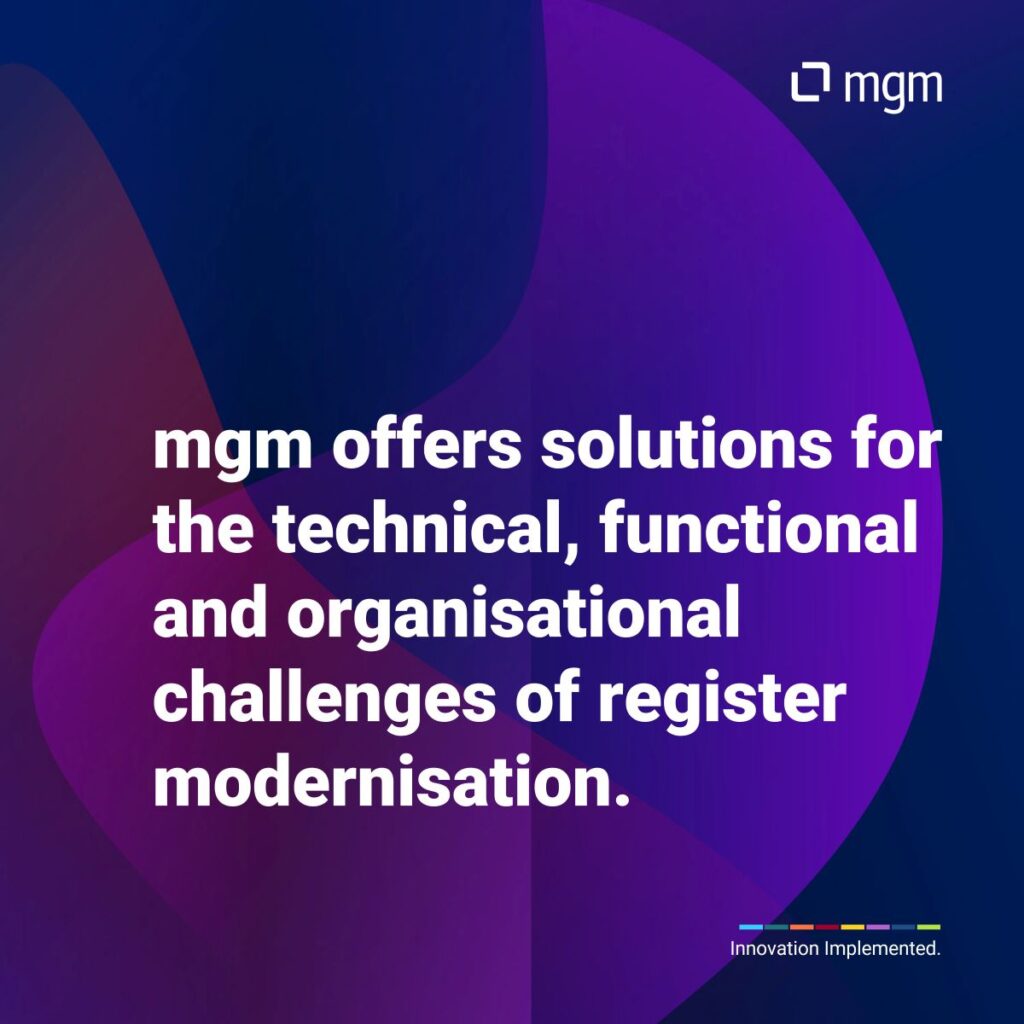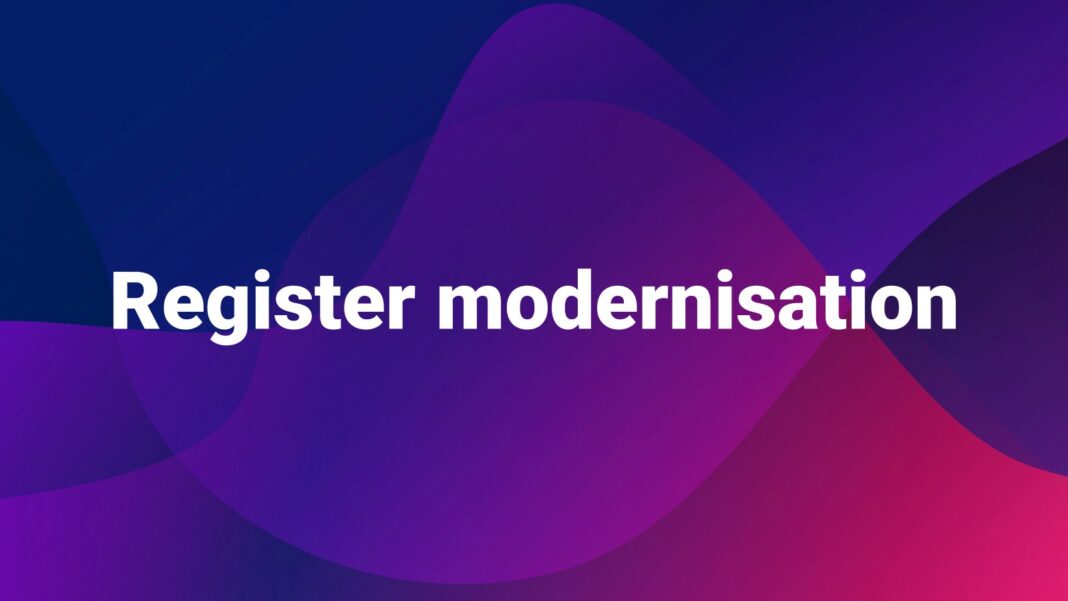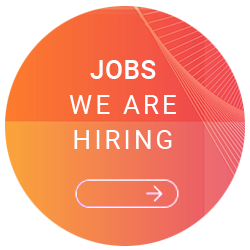Last Updated on 17. November 2025
The digitisation of public administration in Germany is at a decisive crossroads. While important administrative services are now offered digitally under the Online Access Act (OZG), one key problem remains: citizens and businesses have to repeatedly submit the same data and evidence. Register modernisation is the answer to this challenge. It forms the foundation for efficient, effective and sustainable digital administration.
Why register modernisation is indispensable
The importance of this major project can hardly be overestimated. Alongside the OZG, register modernisation is one of the largest digitisation projects in public administration in Germany. Its core objective is to network registers across Germany and the EU in order to implement the once-only principle. Citizens and businesses should only have to submit their data to the administration once. If they wish, authorities can then exchange this information with each other in compliance with data protection regulations.
The advantages are obvious: faster administrative processes, less bureaucracy, higher data quality and an administration capable of acting even in times of demographic change and skills shortages. Modern registers create the basis for administrative services to be provided seamlessly, efficiently and in a service-oriented manner, both nationally and across borders within the EU. At the same time, register modernisation is the basis for evidence-based, data-supported policy.
The Register Modernisation Act (RegMoG) and the Identification Number Act (IDNrG) created the legal basis for this. The technical infrastructure is provided by the National Once-Only Technical System (NOOTS), the first version of which will be available at the end of 2025. The challenges lie less in technical operation than in technical, organisational and legal coordination – especially in cross-departmental and cross-level data management between the federal government, the states and local authorities.
The challenges of register modernisation
The implementation of register modernisation is complex and multi-layered. The biggest challenges of this major project include:
Technical challenges
- Modernisation of data stocks: Germany’s heterogeneous register landscape, with over 350 different types of registers and more than 5,000 individual registration registers, must be made digitally accessible
- Establishing a communication infrastructure: To date, the focus has been on the transport level with the components of the National Once-Only Technical System (NOOTS) – registers, application portals and specialist procedures must be connected
- Implementation of the once-only principle: Automated data provision must be technically implemented in application and specialist portals
Technical challenges
- Dealing with heterogeneous data structures: Registers use different data models, formats, structures and definitions, which must be standardised and harmonised.
- Fine-grained technical assignment of data fields: When retrieving evidence at maturity levels C (electronically evaluable) and D (needs-based data sets), source data must be precisely assigned to the correct target fields.
Organisational challenges
- Coordination of numerous actors: Register-keeping authorities at municipal, state and federal level, as well as data protection officers and IT service providers, must work together
- Change management and training: The transition to new processes and systems requires comprehensive support for employees
- Governance and control: Complex projects involving many stakeholders must be coordinated and monitored
mgm as a pioneer in register modernisation
mgm has established itself as one of the leading partners in the implementation of register modernisation. With many years of experience, proven solutions and a deep understanding of the challenges of modern register landscapes, we support authorities and organisations on their path to digital transformation, as the selected examples show.
VaSt – Once-Only on a large scale
An outstanding example of mgm’s expertise is the pre-filled tax return (VaSt) in ELSTER. This Once-Only system has been in production since 2013 and has become one of the most successful examples of the reuse of register data in Germany.
The figures speak for themselves:
- More than 37.5 million participants now use VaSt
- 600,000 certificate requests are processed every day
- A total of 680 million certificates are stored
- Twelve types of data, such as social security contributions and Riester and Rürup certificates, are assigned precisely to the correct target fields on the tax forms
The system supports preliminary calculations and multiple source and target versions. The experience gained from this large-scale project has provided mgm with valuable insights for register modernisation and led to the development of special transformation and mapping tools.
Digitisation of registers: The Hamburg Ship Register
mgm is thoroughly familiar with the challenges of registers. Together with Dataport, mgm has completely digitised the Hamburg Ship Register – Germany’s largest ship register with around 6,200 registered ships. The project not only included the technical implementation, but also the entire process conversion from paper to online.
Since August 2020, the register has been operating completely digitally. Register printouts and ship documents are now created electronically and automatically. The project has demonstrated how successful register digitisation works and serves as a blueprint for other federal states.
Pioneer in NOOTS testing
As a partner of the financial administration, mgm has contributed significantly to the further development of the infrastructure in the NOOTS implementation projects:
- mgm was the first service provider to connect a data provider to the NOOTS reference environment
- A data consumer was successfully connected to the intermediary platform
- In KONSENS follow-up projects, mgm is supporting the tax authorities in putting the software created in the course of the FITKO pilot projects into production at ELSTER
Expertise with XÖV technical standards
Thanks to its extensive project experience in the public sector, mgm is familiar with numerous XÖV data standards that are used in specialist procedures for data exchange. In addition, mgm has relevant experience in the design, creation and management of XÖV standards. For example, mgm co-developed the XFoerderleistungsbeschreibung standard and acts as the owner of this standard.

Solutions from mgm for register modernisation
Based on its extensive project experience, mgm offers a broad portfolio of solutions and services for register modernisation:
Mapping & transformation – modelled instead of programmed
Experience with VaSt has provided a key insight: the path from source to target data must not be programmed. This may still work for small individual projects, but for large-scale projects such as VaSt and register modernisation, it results in massive follow-up costs and maintenance pitfalls.
The reasons are obvious:
- Source and target data undergo changes over time
- Some target data only results from the combination of several source data
- Programmed solutions are difficult to maintain and not flexible enough
mgm has therefore developed special models and modelling tools for this process. The key feature is that subject matter experts can model the data mapping themselves – without any programming knowledge. The data pipeline has a modular structure and consists of various mapping models. These make large-scale data mapping manageable in the long term and significantly reduce the programming effort.
NOOTS simulator and test environment
As part of the NOOTS implementation projects, mgm has developed a simulator that greatly simplifies the testing and development of NOOTS integration components:
- Implemented as an A12 application
- Simulates the APIs of the secure connection nodes (SAK) in V1/V2 for national and international data retrieval
- Enables convenient creation of sample and test evidence
- Supports the testing of individual error and response scenarios
- Based on the official interface descriptions
- Easily expandable for future versions of XNachweis and SAK APIs
The simulator significantly lowers the barriers to NOOTS integration and accelerates the development of new connection projects.
A12 Enterprise AI Low Code Platform – Basis for registers, application portals and specialist procedures
In the context of register modernisation, mgm’s A12 Enterprise AI Low Code Platform offers a robust, flexible and productive development basis for the implementation of modern register solutions:
- The model-driven approach enables registries to be adapted and expanded without major development effort
- The underlying technical expertise can be maintained in the long term via models instead of code, which significantly simplifies maintenance
- There are great synergies when several applications are based on the same model
Example: A specialist application that authorities use to re-enter and maintain data records can be combined with a web application that citizens can use to view extracts from a register – both based on the same data model.
Practical consulting
mgm offers comprehensive consulting services covering all relevant aspects of register modernisation:
- Programme and project management: Professional management of complex register modernisation projects
- Modernisation strategies: Development of tailor-made strategies tailored to specific requirements
- Organisational consulting: Sound support during organisational changes
- Change and communication management: Support during the introduction of new processes and systems
- Analysis of existing registers: Comprehensive inventory and potential analysis
- Development of modern architectures: Design of future-proof, standards-compliant solutions
- Implementation of legal and technical requirements: Ensuring compliance with RegMoG, IDNrG and other regulations
The focus is on efficient processes, high data quality and the sustainable integration of new solutions into existing IT landscapes.
The importance of data mapping in register modernisation
One aspect that is often overlooked in public debate is the complexity of data mapping. While there is much discussion about the exchange of register data in compliance with data protection regulations, other challenges that arise in practice only after the data has been exchanged remain hidden.
Mapping source data from different registers to the correct target fields is highly complex. This often requires a comprehensive set of rules. Registers use different data models, formats, structures and definitions. Harmonising this heterogeneous data landscape is one of the central tasks.
mgm has learned from its experience with pre-filled tax returns that a modelling approach with a rule and calculation language should be used rather than programming. This is the only way to make data mapping manageable on a large scale in the long term.
Technical standards and European connectivity
Register modernisation is not just a national project. With the Single Digital Gateway Regulation (SDG-VO), the EU has created the framework for cross-border data exchange. This means that German registers must be able to communicate not only with each other, but also with European systems.
The implementation of standards can be roughly divided into two categories:
- Standards that are as close as possible to the European specification: For exchange within the EU, data should be available in a format that can be processed correctly by all components involved.
- Standards that are defined independently at national level: For example, for the data protection cockpit, which is not currently planned at European level.
The joint use of technical specifications can minimise differences between national and European variants, which reduces the effort required for the necessary mapping by the intermediary platform.
Register consolidation as a success factor
An important aspect that mgm has already highlighted in its publications is the systematic consolidation of registers. Although the modernisation of the German register landscape follows the principle of federal decentralised data storage, there is currently no systematic consolidation of registers of the same type.
The challenge: many types of registers exist in multiple forms, as they are the responsibility of federal states and local authorities. In total, there are more than a quarter of a million registers in Germany. Without a more detailed examination of consolidation options, there is a risk of additional costs due to the separate digitisation of similar registers.
Janos Standt, Head of the Public Sector Division at mgm, sums it up: “Basically, we are on the right track with the modernisation of registers. Basic components are being developed and standards defined. Nevertheless, delays and unnecessarily high implementation costs are already foreseeable – because there is neither a consistent concept nor clear guidance for consolidating similar registers. The exclusive focus on prioritised registers is postponing the modernisation of the majority of registers in an unacceptable manner. Instead, the focus should be on keeping registers at the right administrative level and, where appropriate, delegating their management in a sensible manner.”
Lessons learned from practice
The practical implementation of register projects provides valuable insights. In the mgm podcast, Tim Schneider from the Hamburg Justice Authority and Christian Thomsen from mgm shared their lessons learned from an agile register project. Such experience reports are invaluable because they show what really works in practice and where the stumbling blocks lie.
Key success factors are:
- Early involvement of users: Future users should be involved in the development process from the outset.
- Agile methods: Iterative development with regular feedback enables rapid adjustments.
- Focus on user-friendliness: The system must adapt to the way users work, not the other way around.
- Change management from the outset: Organisational transformation must run parallel to technical development.
The role of OZG and register modernisation
The Online Access Act and register modernisation are two sides of the same coin. While the OZG ensures that digital services are visible and usable, register modernisation ensures that the data can be provided consistently and efficiently in the background.
Only the interaction of both projects enables completely digital administrative services without media discontinuity:
- The front end (OZG portals) offers user-friendly interfaces for submitting applications and communicating
- The back end (register modernisation) ensures automated retrieval of evidence and provision of data
Only when both levels work together seamlessly can the once-only principle realise its full potential.
Outlook: The path to a modern register landscape
Register modernisation is a generational project that will be implemented over many years. After the first version of NOOTS is made available at the end of 2025, the gradual connection of the prioritised registers is on the agenda. The 19 ‘top registers’ with the greatest potential benefits for once-only will be connected as a priority.
The challenges are well known:
- Technical integration of existing systems into the NOOTS infrastructure
- Technical harmonisation of heterogeneous data structures
- Organisational coordination between federal levels
- Legal adjustments for additional use cases
- Change management in public authorities and administrations
But the opportunities far outweigh the challenges. A modern, networked register landscape is the basis for a sustainable digital administration. It enables:
- More efficient processes and time savings for all involved
- Higher data quality through centralised maintenance and validation
- Better service for citizens and businesses
- Administrative capacity despite a shortage of skilled workers
- A basis for evidence-based policy through better data availability
- Competitiveness of Germany as a business location
Conclusion
Register modernisation is much more than an IT project – it is a fundamental building block for the future of German administration. As the basis for the once-only principle, it creates the conditions for efficient, effective and sustainable digital administrative services.
mgm has established itself as a reliable partner and pioneer in the implementation of register modernisation. With proven solutions such as the mapping and transformation framework, the NOOTS simulator, the A12 Enterprise AI Low Code platform and comprehensive consulting expertise, mgm supports authorities at all levels in modernising their registers and making them fit for the digital future.
Experience gained from large-scale projects such as the pre-filled tax return with over 37.5 million users and the successful digitisation of the Hamburg ship register shows that mgm has the know-how, tools and experience to master the complex challenges of register modernisation.
The path to a modern registry landscape is challenging, but it is feasible and indispensable for an administration that meets the demands of the 21st century.
Contact us to learn more about how mgm can support your organisation in registry modernisation.
For more information on registry modernisation, visit our insights blog.







